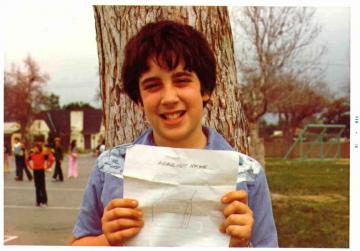“Dear Librarian…” My continuing struggle against one of the oldest enemies in Los Angeles… IGNORANCE!
William B. of Bellflower asks, “Dear librarian, I’m sure you have a screed about Thanksgiving. Can I hear it?” Gee, William, you’re right, and I was even nice enough to wait until afterwards so as not to spoil it. I wish “they” had been so patient with the Christmas lights, which here in Los Angeles seem to have been timed to come on sometime between the entree and dessert.
Thanksgiving is based on one of the oldest human traditions, the harvest festival. Depending on the location, sometime in late fall it was time for our ancestors to eat the food that would not last the winter and prepare the rest for storage. Prior to the icebox and the refrigerator, people needed to fatten up a bit for winter, just like most animals, and the harvest festival was the time to do it.
In England and northern Europe, the religious holiday of Thanksgiving was a replacement for the many Catholic feast days which slowly disappeared after the Reformation in the 16th century, and eliminated by the Puritans a hundred years later. A day of Thanksgiving could be declared for any special event, such as the defeat of the Armada, and there was an annual Thanksgiving celebrated on 5 November after the failure of the Gunpowder Plot of 1605; today this holiday is known as Guy Fawkes Day and had lent traditions to both the contemporary Thanksgiving and to Halloween.
In American mythology, Thanksgiving has been associated with a feast that occurred at Plymouth Colony in October 1621, although they did not call it that. The first actual “Thanksgiving” at Plymouth took place in the summer of 1623, when a ship arrived with supplies and additional colonists. In 1621 the Pilgrims (who were not Puritans, as you might think, but less radical Brownists) were merely celebrating being alive at a three-day feast; half of them had died the previous winter and they were staring another New England winter in the face, albeit with much better relations with their Native American neighbors, about a hundred of whom were also at the feast. Activists often mock this first Thanksgiving, but it is true that the Wampanoag and the English were closely allied at this time, eventually even joining forces against the Narragansett. The alliance was short-lived, but for a brief time the two groups were in rare harmony.
The first Thanksgiving in North America, ignoring a specious claim by the tourism board of Saint Augustine, Florida, was celebrated at the Berkeley Hundred plantation outside of Jamestown, Virginia, on 4 December 1619, the day the Margaret arrived with a shipload of colonists from Bristol. There had been other days of Thanksgiving celebrated in Virginia as early as 1607, but the massacre of colonists by the Powhatan in 1622 put a dent in their holidays, and the myth of convivial relations between Indian and Englishman across the dinner table moved north to Massachusetts. Thanksgiving remained mostly as a harvest feast and religious holiday in New England, until it became a political football during the Revolution, and the Continental Congress declared a day of Thanksgiving after Philadelphia was occupied by the British in 1777. George Washington proclaimed another such day after the victory at Saratoga, and as President declared the first national Thanksgiving on 26 November 1789. Many other presidents and some states declared a day of Thanksgiving in the years afterward, except Thomas Jefferson and Andrew Jackson, neither much of a friend to Native tribes, who would not proclaim a national Thanksgiving out of concern for the separation of church and state.
The annual Thanksgiving holiday in the United States was declared by President Abraham Lincoln in October 1863. He was supported in this by his former rival and brilliant Secretary of State, William Seward, who later bought Alaska. Lincoln had also proclaimed a day of Thanksgiving in November 1861, but after urging from editor Sarah Hale, made it annual. Hale had been petitioning to create a national holiday for decades, and in the autumn lull between the bloodbath of Gettysburg and the strategic Southern defeat at Chattanooga, Lincoln and Seward saw an opportunity to create a day that the entire country could celebrate as uniquely American.
Of course, good old American consumerism made Thanksgiving the capitalist orgy it is today, drawing the ire of Native Americans, commies and atheists. Gimbel’s, J.L. Hudson and Macy’s all sponsored Thanksgiving parades in the early 1920s, taking advantage of the good times to start the tradition of beginning the Christmas shopping season during the long weekend that went with Thanksgiving. Our own Hollywood Chamber of Commerce responded with a citywide parade shortly thereafter. At the end of every parade, Santa Claus rolls by and blesses the urge to spend, spend, spend; and if you are lucky, right behind Santa are a few Christians bemoaning the lack of Jesus in Christmas (even though Jesus was born in September, the subject of a previous rant.) President Franklin D. Roosevelt moved the holiday up a week to lengthen the Christmas shopping season during the Great Depression, and the rest is history. We won’t even discuss the boosterism that began after World War II with the National Turkey Federation, the cranberry canners, the airlines, football teams, chain stores, etc. etc. etc. Let’s just say my family went to an Italian restaurant…AGAIN.
I hope that clears things up for you, and remember, only 31 shopping days ’til Armageddon!





EXCELLENT article, Joel! I hope to see MORE of your writing SOON!